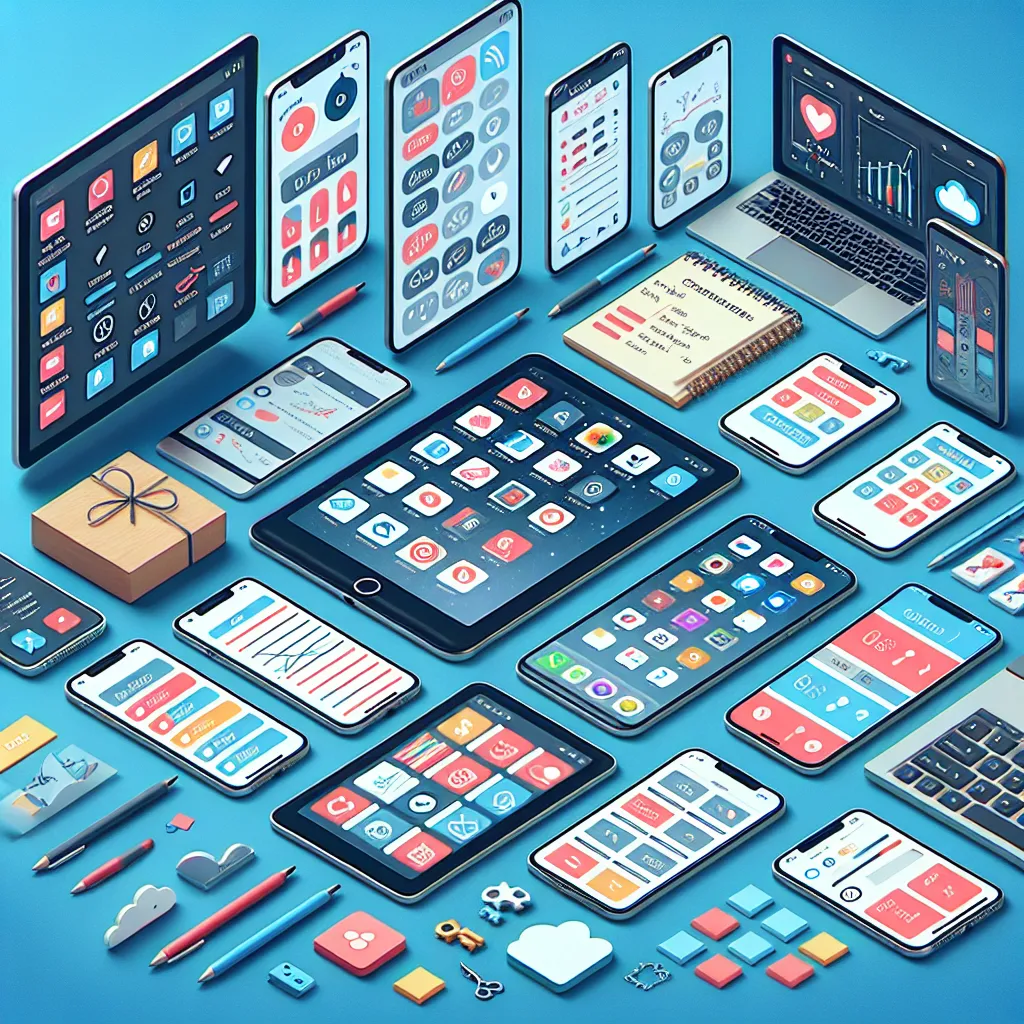In recent IELTS Speaking exams, questions about technology and its impact on our daily lives have become increasingly common. One such topic that has gained prominence is describing a digital tool that has improved your productivity. This article will guide you through answering this question effectively, helping you achieve a high band score in your IELTS Speaking test.
Nội dung bài viết
- Part 1: Introduction and Interview
- Q: Do you use any digital tools to help with your work or studies?
- Q: How do you think technology has changed the way people work?
- Part 2: Long Turn
- Sample Answer (Band 8-9):
- Follow-up Questions:
- Part 3: Two-way Discussion
- Q: How do you think technology has changed the concept of productivity in recent years?
- Q: Do you think there’s a risk of becoming too dependent on digital tools for productivity?
- Key Vocabulary and Phrases for High Scores
- Examiner’s Advice
Part 1: Introduction and Interview
In this section, the examiner may ask you some general questions about digital tools and productivity. Here are a few sample questions and responses:
Q: Do you use any digital tools to help with your work or studies?
Band 6-7 Answer:
Yes, I do. I often use a few apps on my phone and computer to help me stay organized and manage my tasks better.
Band 8-9 Answer:
Absolutely. I’m quite reliant on a variety of digital tools to enhance my productivity. For instance, I frequently use task management apps, note-taking software, and cloud storage solutions to streamline my workflow and keep track of my projects more efficiently.
Q: How do you think technology has changed the way people work?
Band 6-7 Answer:
I think technology has made work faster and easier in many ways. People can now work from anywhere and communicate quickly with others.
Band 8-9 Answer:
Technology has revolutionized the workplace in numerous ways. It has dramatically increased efficiency by automating routine tasks and enabling remote collaboration. Moreover, it has facilitated instant communication and access to vast amounts of information, allowing for more informed decision-making. However, it’s worth noting that this constant connectivity can also lead to challenges in maintaining a healthy work-life balance.
 Various digital productivity tools on devices
Various digital productivity tools on devices
Part 2: Long Turn
In this section, you’ll be given a cue card with a topic to speak about for 1-2 minutes. Here’s a sample cue card related to our main topic:
Describe a digital tool that has improved your productivity
You should say:
- What the tool is
- How you use it
- When you started using it
- And explain how it has improved your productivity
Sample Answer (Band 8-9):
What the tool is and how you use it:
The digital tool that has significantly enhanced my productivity is Trello, a versatile project management application. I use Trello to organize my tasks and collaborate with my team on various projects. The app allows me to create boards for different projects, each containing lists and cards that represent specific tasks or ideas.
When you started using it:
I started using Trello about two years ago when I was struggling to manage multiple projects simultaneously. A colleague recommended it, and I was immediately impressed by its intuitive interface and flexibility.
How it has improved your productivity:
Trello has revolutionized the way I work in several ways. Firstly, it provides a visual representation of my workflow, allowing me to prioritize tasks effectively and track progress at a glance. This visual approach has dramatically reduced the time I spend on planning and organization.
Secondly, the collaborative features of Trello have streamlined team communication. We can easily share ideas, assign tasks, and provide updates without the need for lengthy emails or meetings. This has significantly cut down on unnecessary communication and allowed us to focus more on actual work.
Moreover, Trello’s integration with other tools like Google Drive and Slack has created a seamless workflow. I can attach relevant documents to tasks and receive notifications across platforms, ensuring that I never miss important updates.
Lastly, the mobile app allows me to stay productive on the go. I can quickly capture ideas or make updates to projects even when I’m away from my desk, ensuring that I’m always making progress towards my goals.
In conclusion, Trello has not only improved my personal productivity but has also enhanced our team’s efficiency and collaboration. It’s become an indispensable tool in my daily work routine, helping me stay organized, focused, and productive in an increasingly complex work environment.
Follow-up Questions:
- Are there any drawbacks to using digital productivity tools?
- How do you think digital tools will evolve in the future to further improve productivity?
Band 8-9 Answer for Question 1:
While digital productivity tools offer numerous benefits, they do come with some potential drawbacks. One significant concern is the risk of over-reliance on these tools, which can lead to a decrease in personal organizational skills. Additionally, the constant notifications and updates from multiple apps can be distracting and counterproductive if not managed properly.
Another issue is the learning curve associated with adopting new tools. It often takes time to fully integrate a new app into one’s workflow, which can temporarily decrease productivity. Moreover, with the multitude of options available, choosing the right tool can be overwhelming and time-consuming.
Lastly, there are privacy and security concerns to consider. Many productivity tools require access to personal or professional data, which could be vulnerable to breaches if not properly secured. It’s crucial to carefully vet any tool before integrating it into your workflow and ensure that proper security measures are in place.
Part 3: Two-way Discussion
In this section, the examiner will ask you more abstract questions related to the topic. Here are some sample questions and responses:
Q: How do you think technology has changed the concept of productivity in recent years?
Band 6-7 Answer:
Technology has made productivity easier in many ways. We can now do things faster and more efficiently than before. It has also allowed people to work from anywhere, which can increase productivity.
Band 8-9 Answer:
Technology has fundamentally transformed our understanding of productivity in recent years. Firstly, it has blurred the lines between work and personal life, enabling us to be productive at any time and from any location. This flexibility has led to a shift from measuring productivity by hours worked to focusing on output and results.
Moreover, technology has exponentially increased the speed and volume of information exchange, allowing for faster decision-making and problem-solving. It has also automated many routine tasks, freeing up time for more creative and strategic work.
However, this technological revolution has also introduced new challenges. The constant connectivity can lead to information overload and difficulty in maintaining work-life balance. Additionally, the rapid pace of technological change means that continuous learning and adaptation are now essential components of productivity.
In essence, while technology has undoubtedly enhanced our capacity for productivity, it has also redefined what it means to be productive in the modern world, emphasizing flexibility, continuous learning, and effective management of digital tools and information.
Q: Do you think there’s a risk of becoming too dependent on digital tools for productivity?
Band 6-7 Answer:
Yes, I think there is a risk. People might forget how to do things without these tools, which could be a problem if the technology fails. It’s important to know how to work without always relying on digital tools.
Band 8-9 Answer:
Absolutely, the risk of over-dependence on digital tools is a significant concern in our increasingly digitized world. While these tools undoubtedly enhance our productivity, there’s a fine line between leveraging technology and becoming overly reliant on it.
One of the primary risks is the potential atrophy of fundamental skills. For instance, excessive reliance on spell-checkers and grammar tools could lead to a decline in language proficiency. Similarly, over-dependence on calculators might result in diminished mental arithmetic abilities.
Moreover, there’s the issue of vulnerability. If a digital tool malfunctions or becomes unavailable, those who are heavily dependent on it may find themselves at a significant disadvantage. This highlights the importance of maintaining a balance between digital and traditional methods of work.
Another concern is the potential for reduced creativity and critical thinking. While digital tools can streamline processes, they may also limit our ability to think outside the box or develop novel solutions to problems.
To mitigate these risks, it’s crucial to cultivate a mindful approach to using digital tools. This involves regularly assessing their impact on our work, maintaining our core skills, and ensuring we can function effectively even without these tools. Ultimately, digital tools should complement our abilities, not replace them entirely.
Key Vocabulary and Phrases for High Scores
-
Enhance productivity [ɪnˈhɑːns prɒdʌkˈtɪvɪti] (phrase): To increase or improve the ability to generate, create, enhance, or bring forth goods and services.
Example: “The new software aims to enhance productivity in the workplace.” -
Streamline [ˈstriːmlaɪn] (verb): To make a system, organization, or design more effective and efficient by employing faster or simpler working methods.
Example: “We need to streamline our processes to meet the increasing demands.” -
Collaborate [kəˈlæbəreɪt] (verb): To work jointly on an activity or project.
Example: “The digital platform allows team members to collaborate effectively, even when working remotely.” -
Intuitive interface [ɪnˈtuːɪtɪv ˈɪntəfeɪs] (phrase): A user interface that is easy to use and understand without requiring special training.
Example: “The app’s intuitive interface makes it accessible to users of all tech levels.” -
Revolutionize [ˌrevəˈluːʃənaɪz] (verb): To change something radically or fundamentally.
Example: “Cloud computing has revolutionized the way businesses store and access data.” -
Indispensable [ˌɪndɪˈspensəbl] (adjective): Absolutely necessary or essential.
Example: “In today’s fast-paced work environment, efficient time management tools have become indispensable.”
Examiner’s Advice
To score high in the IELTS Speaking test when discussing digital tools and productivity:
-
Use specific examples: Don’t just mention that you use digital tools; describe a particular tool and how it benefits you.
-
Employ a range of vocabulary: Use varied and sophisticated vocabulary related to technology and productivity.
-
Discuss pros and cons: Show critical thinking by discussing both the advantages and potential drawbacks of digital tools.
-
Link ideas coherently: Use linking words and phrases to connect your ideas smoothly.
-
Practice fluency: Aim to speak at a natural pace without long pauses or hesitations.
Remember, the key to success in IELTS Speaking is not just about what you say, but how you say it. Practice regularly, record yourself, and listen back to identify areas for improvement.
For more tips on improving your IELTS Speaking skills, check out our guide on describing a recent advancement in technology that impacted your work or study.


